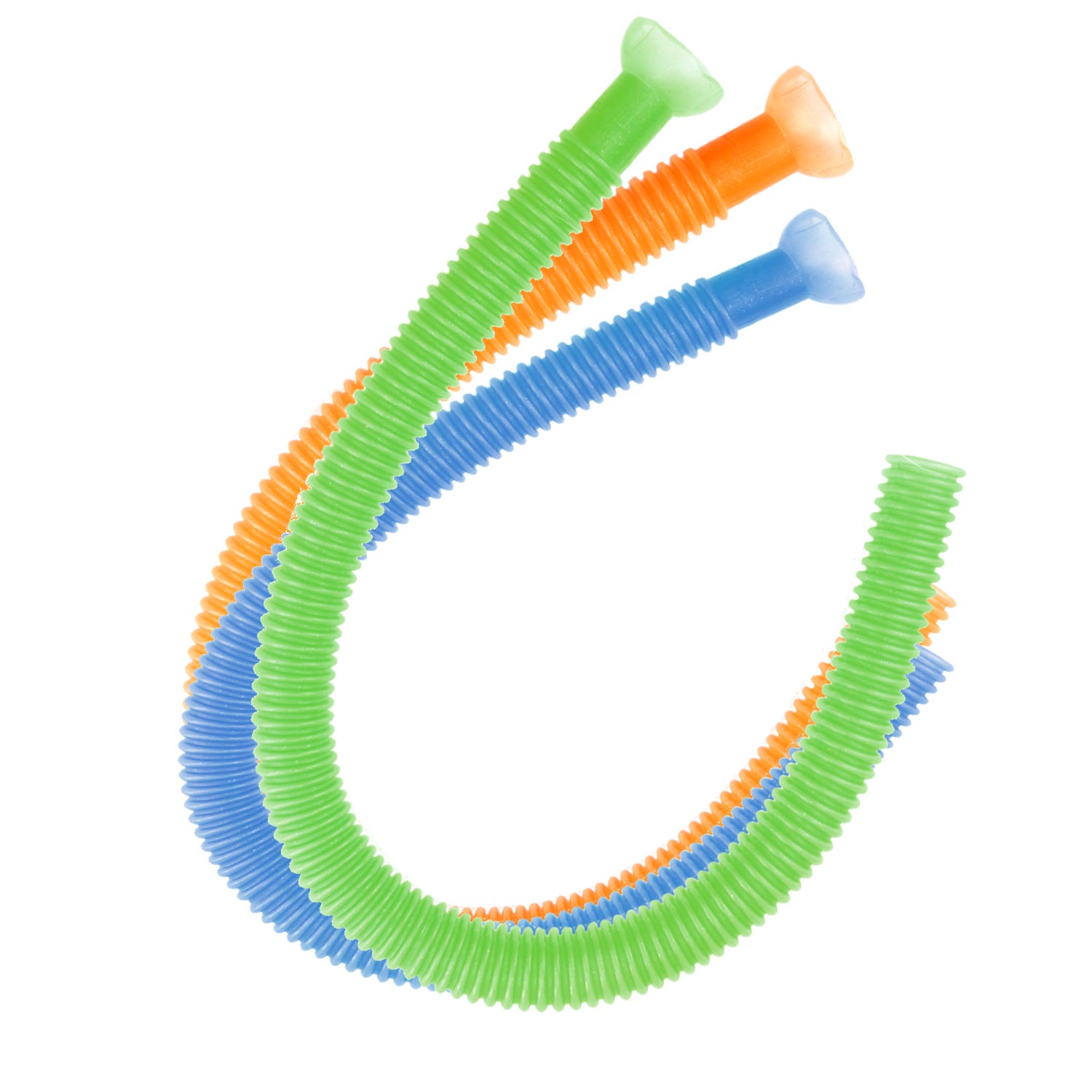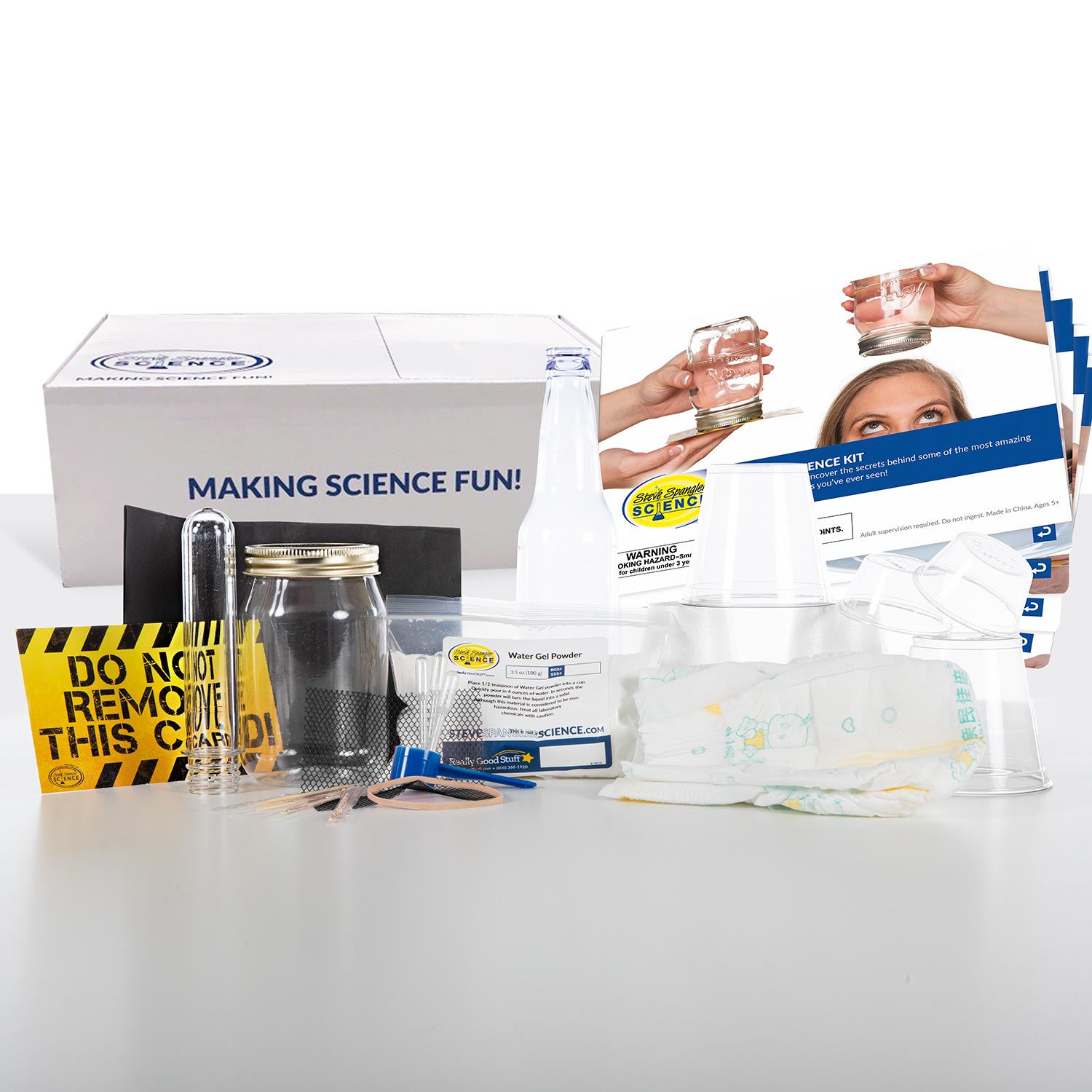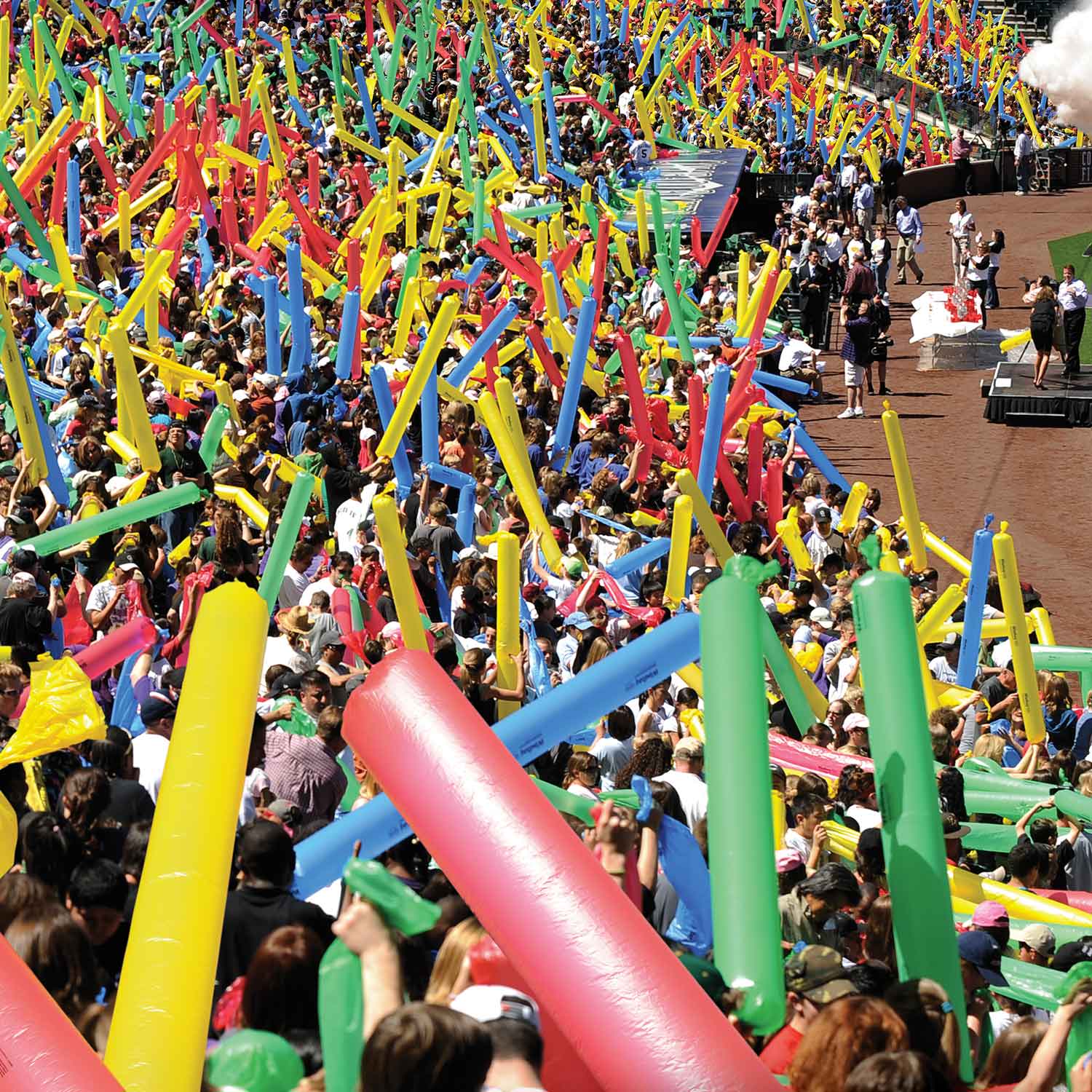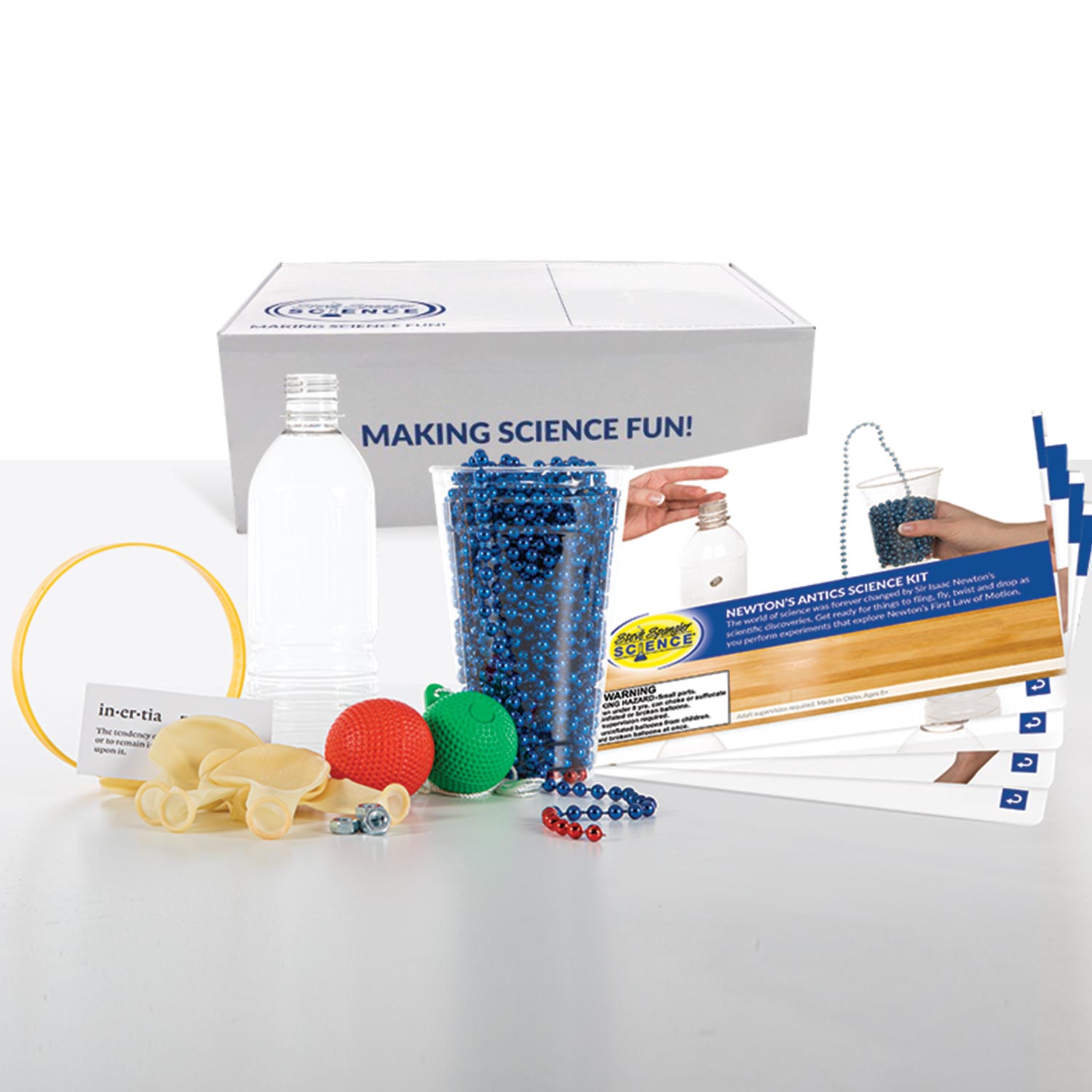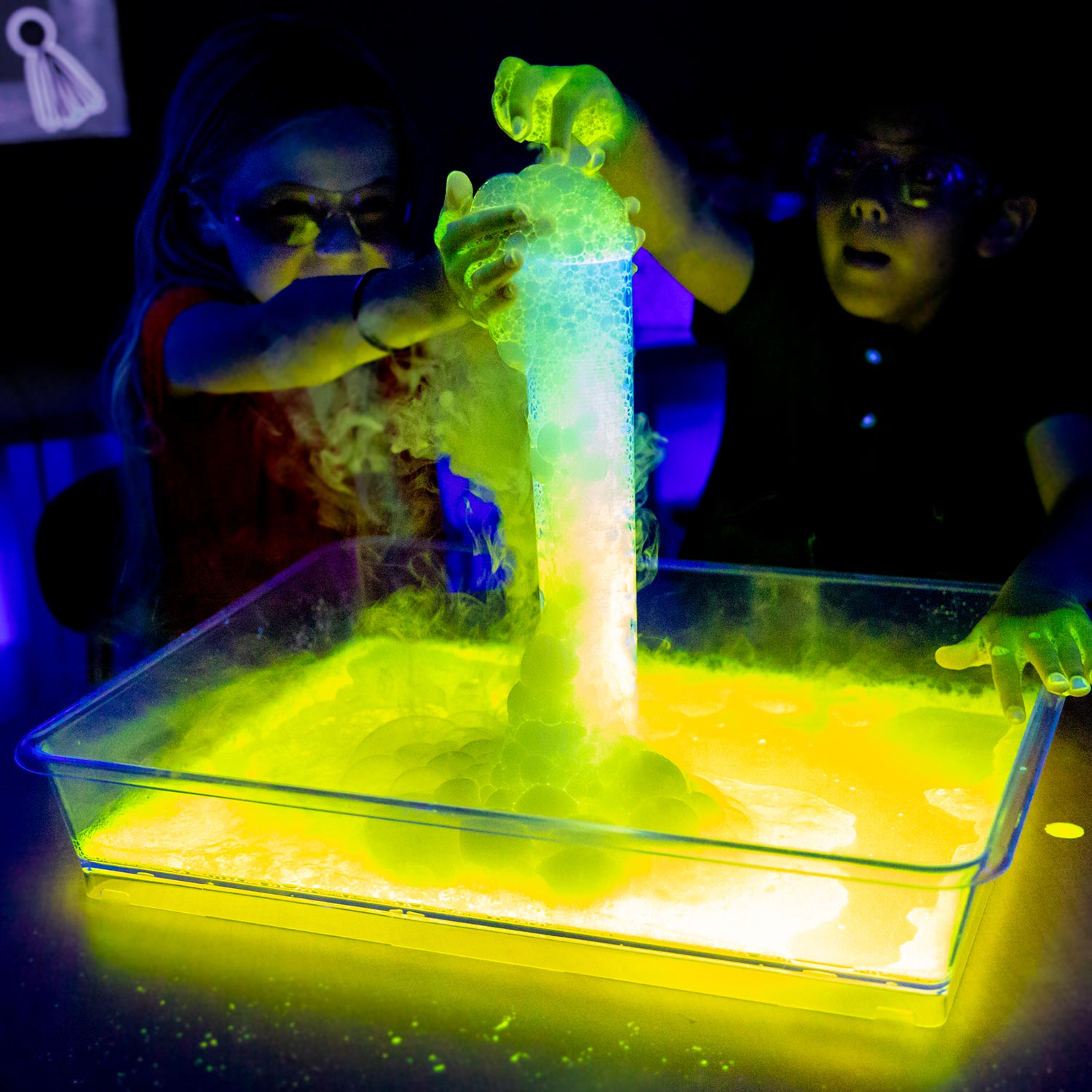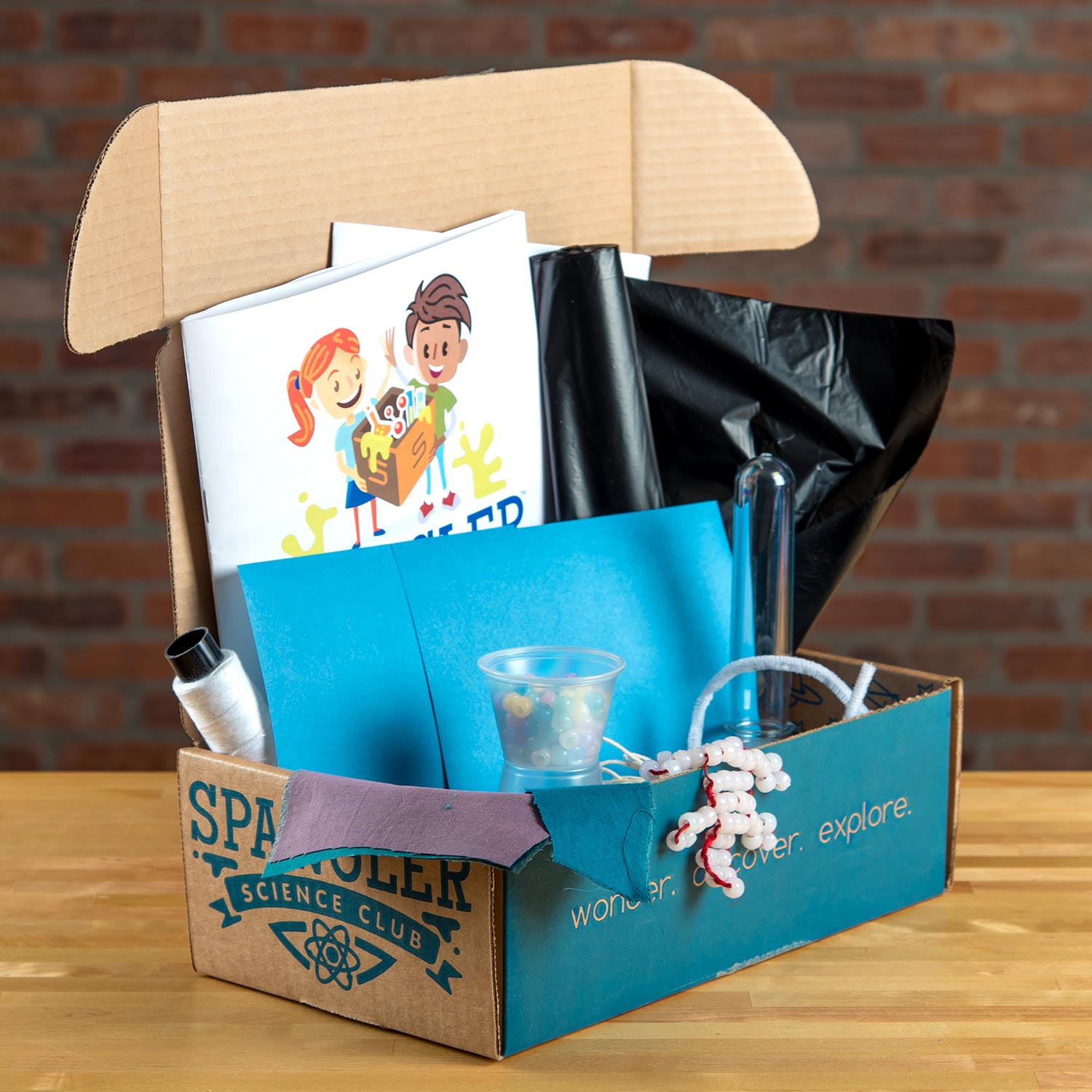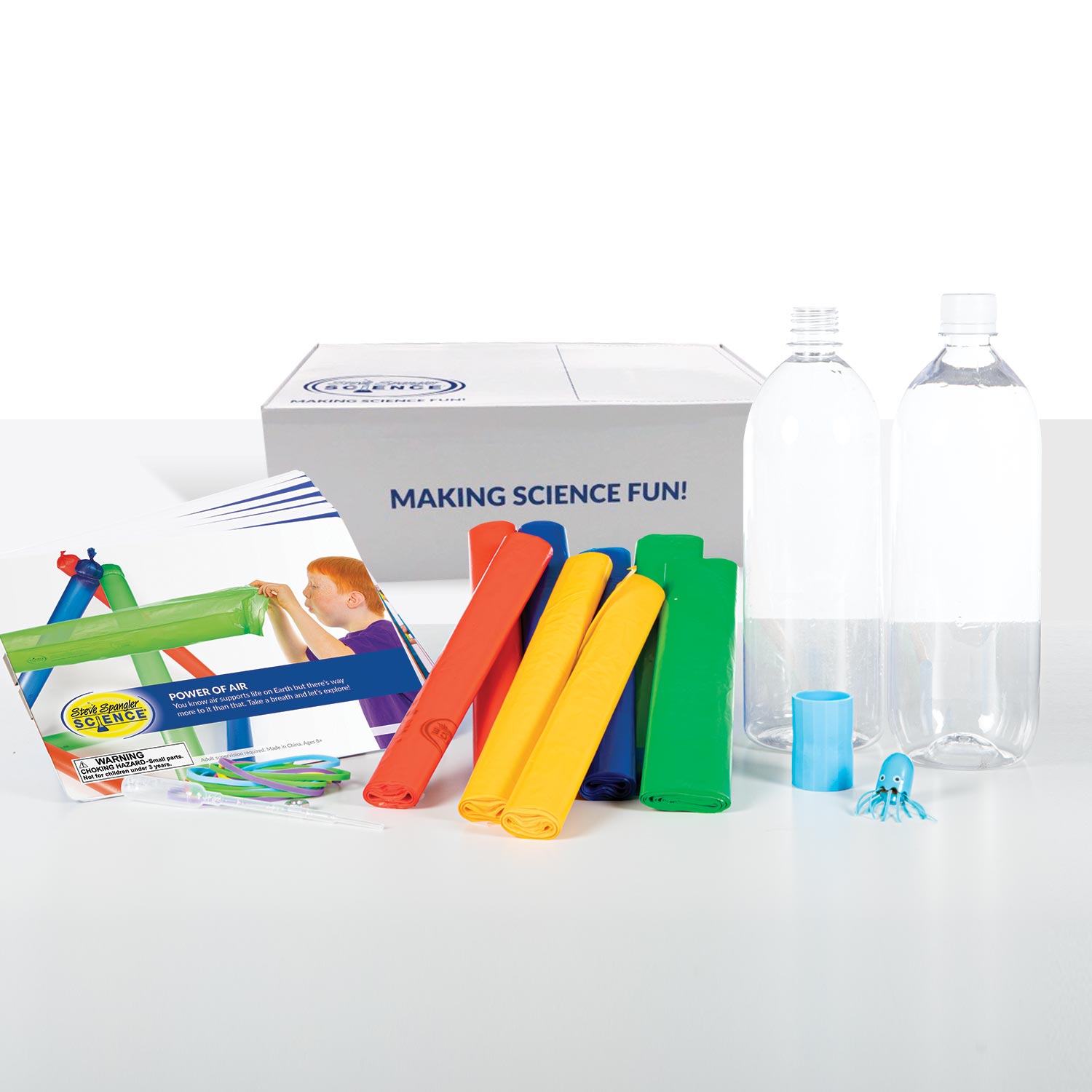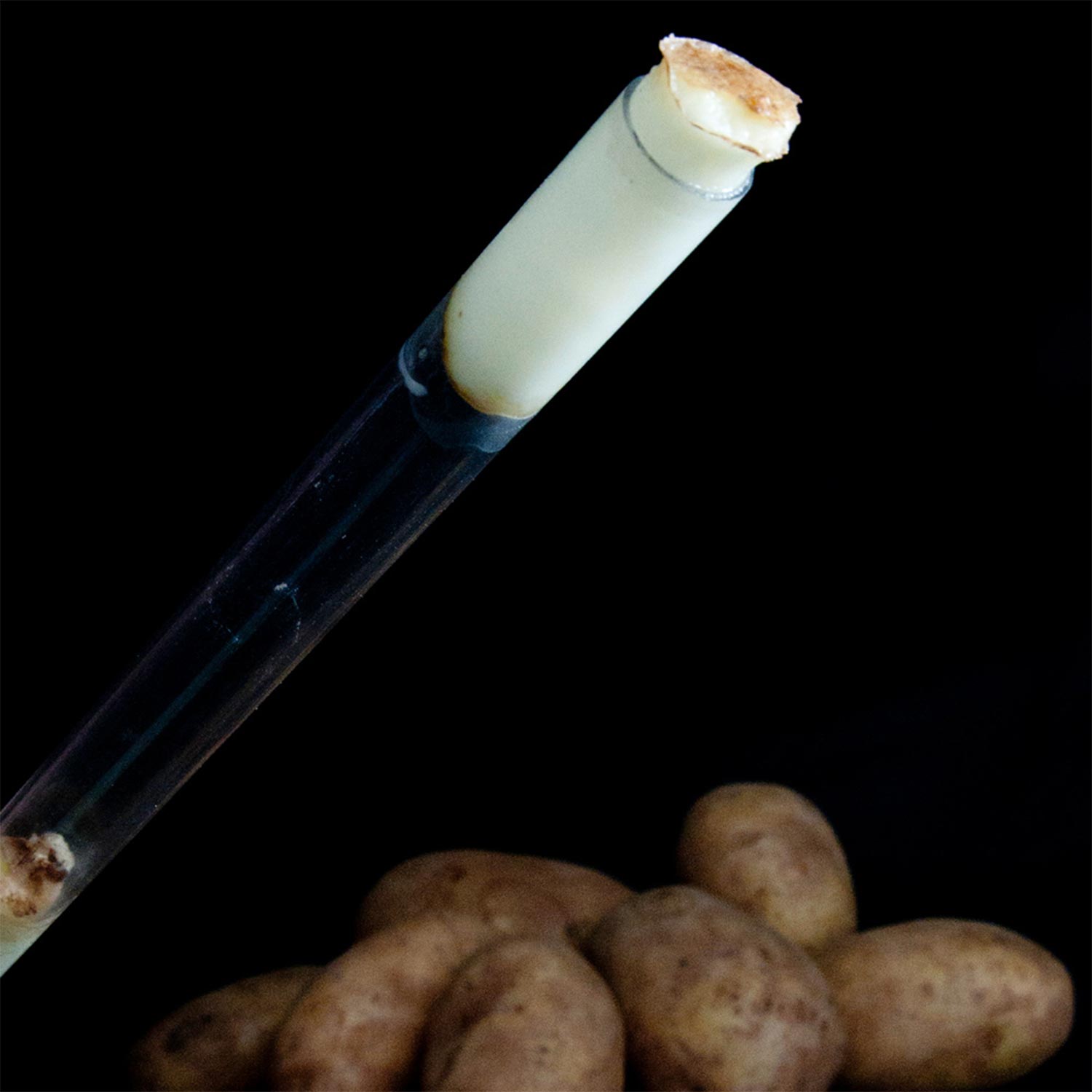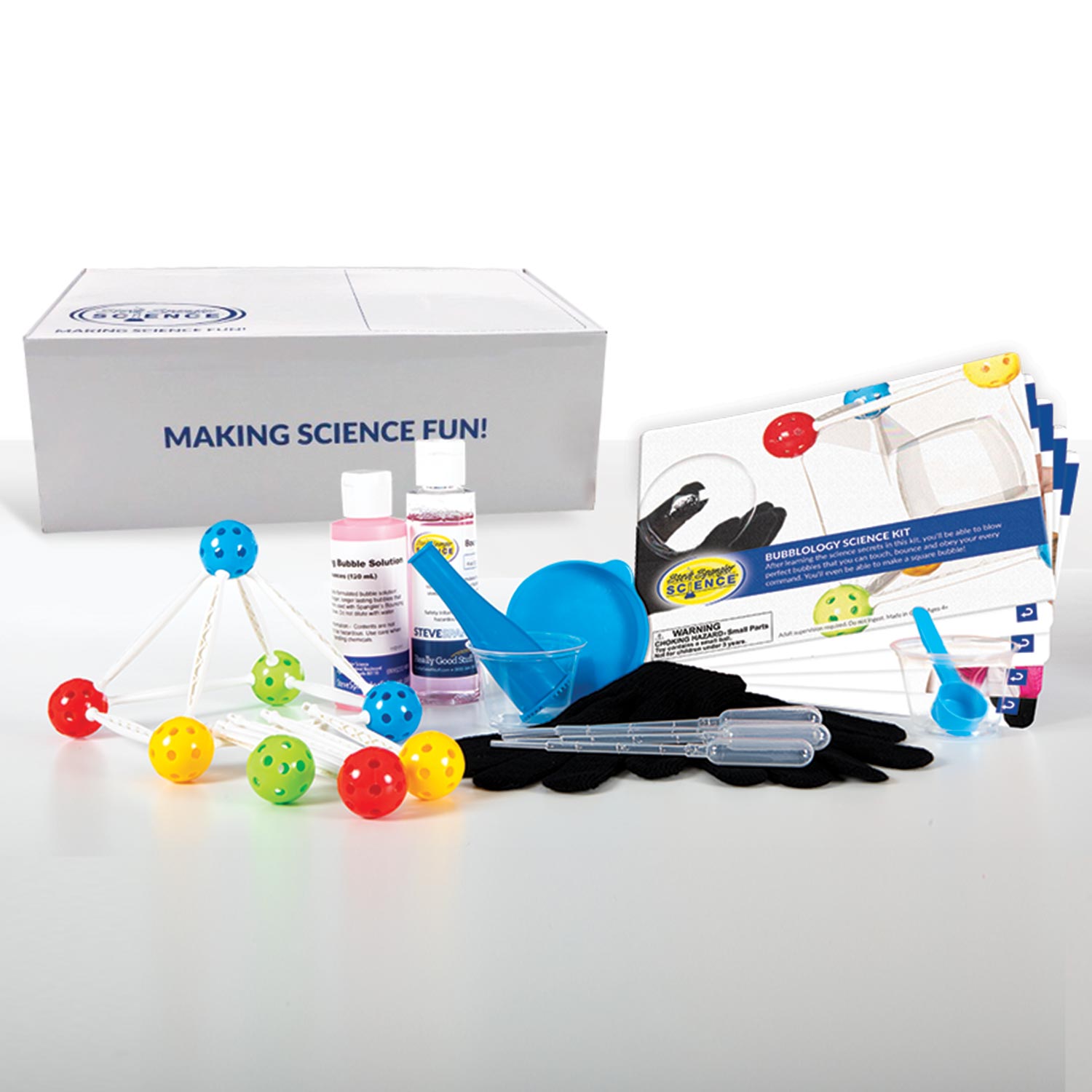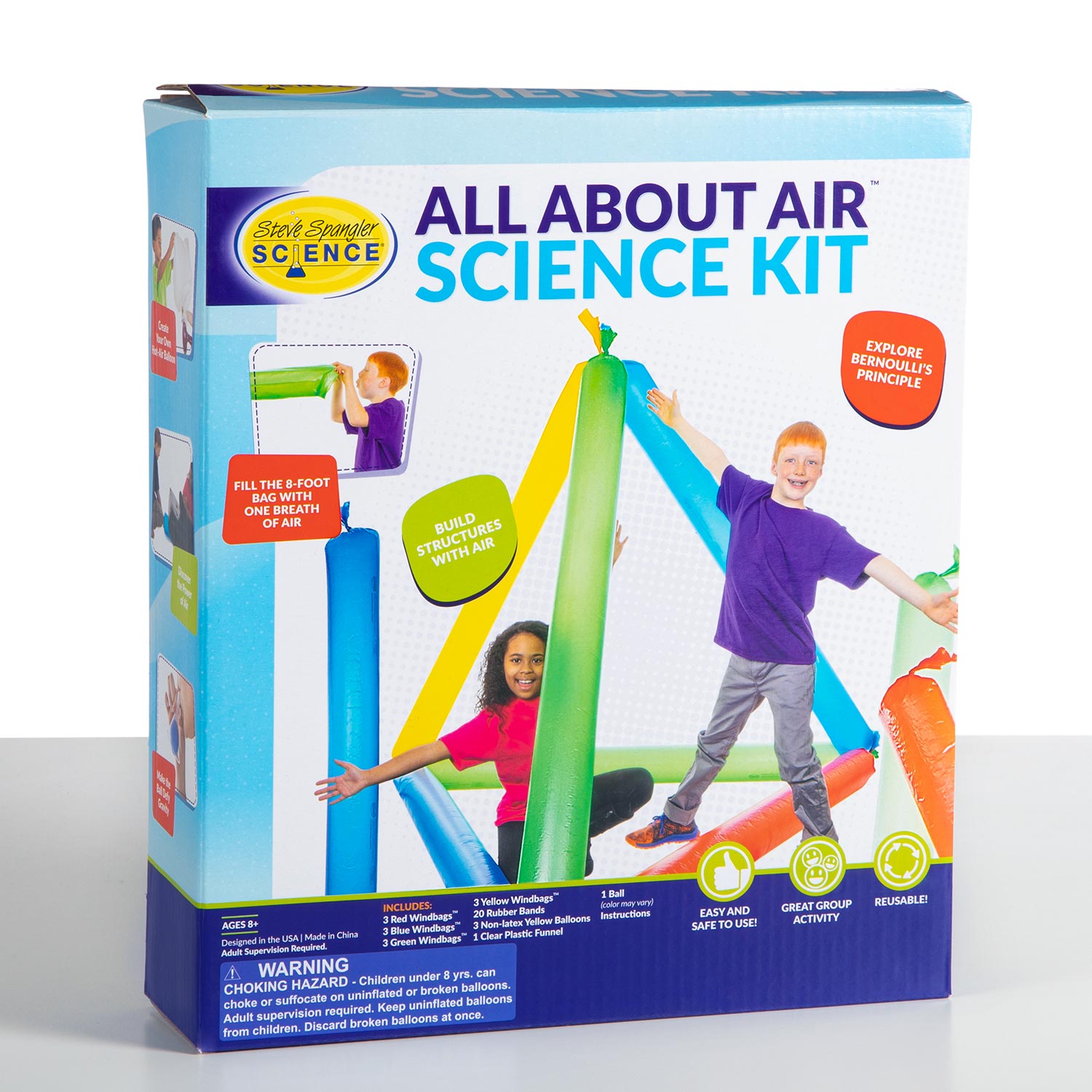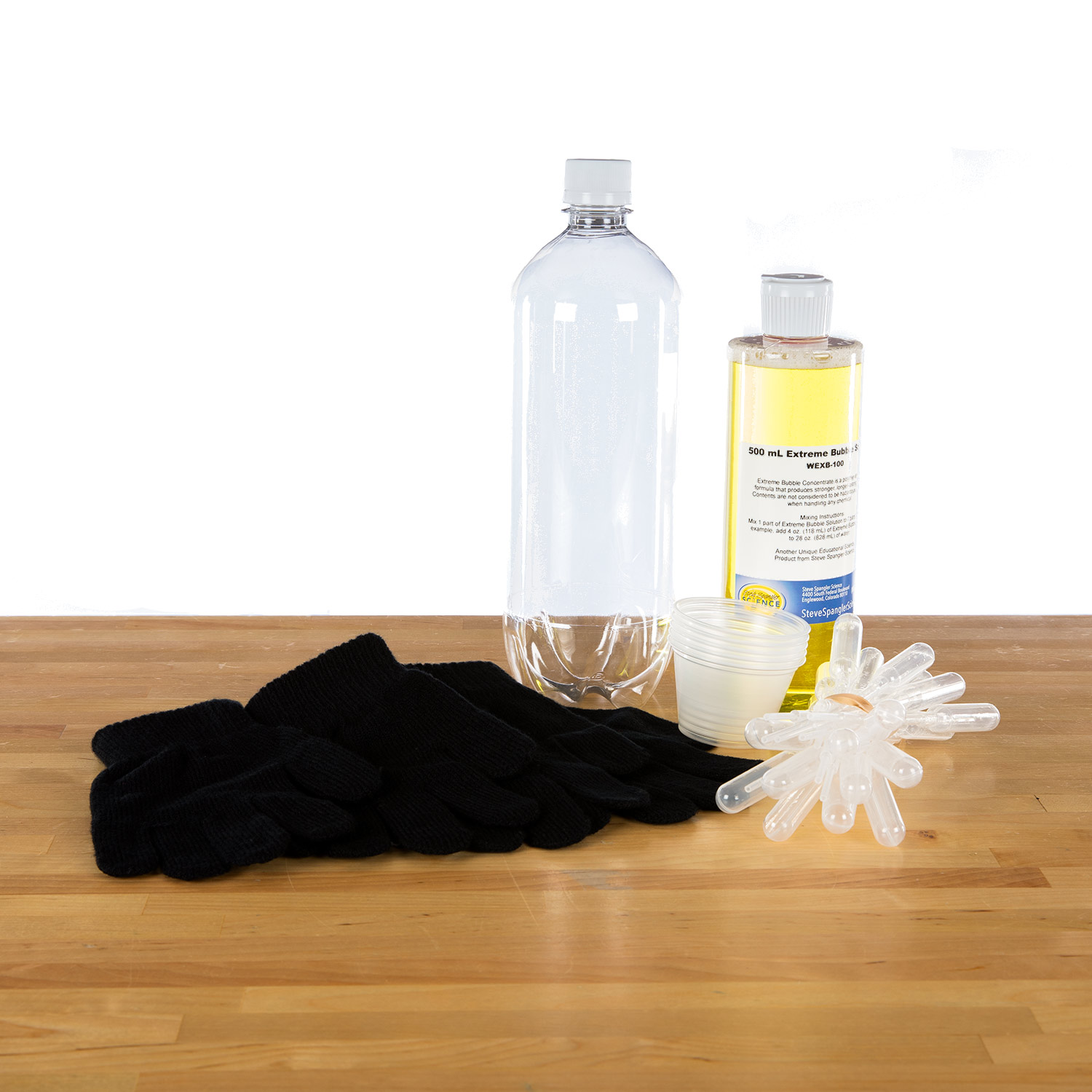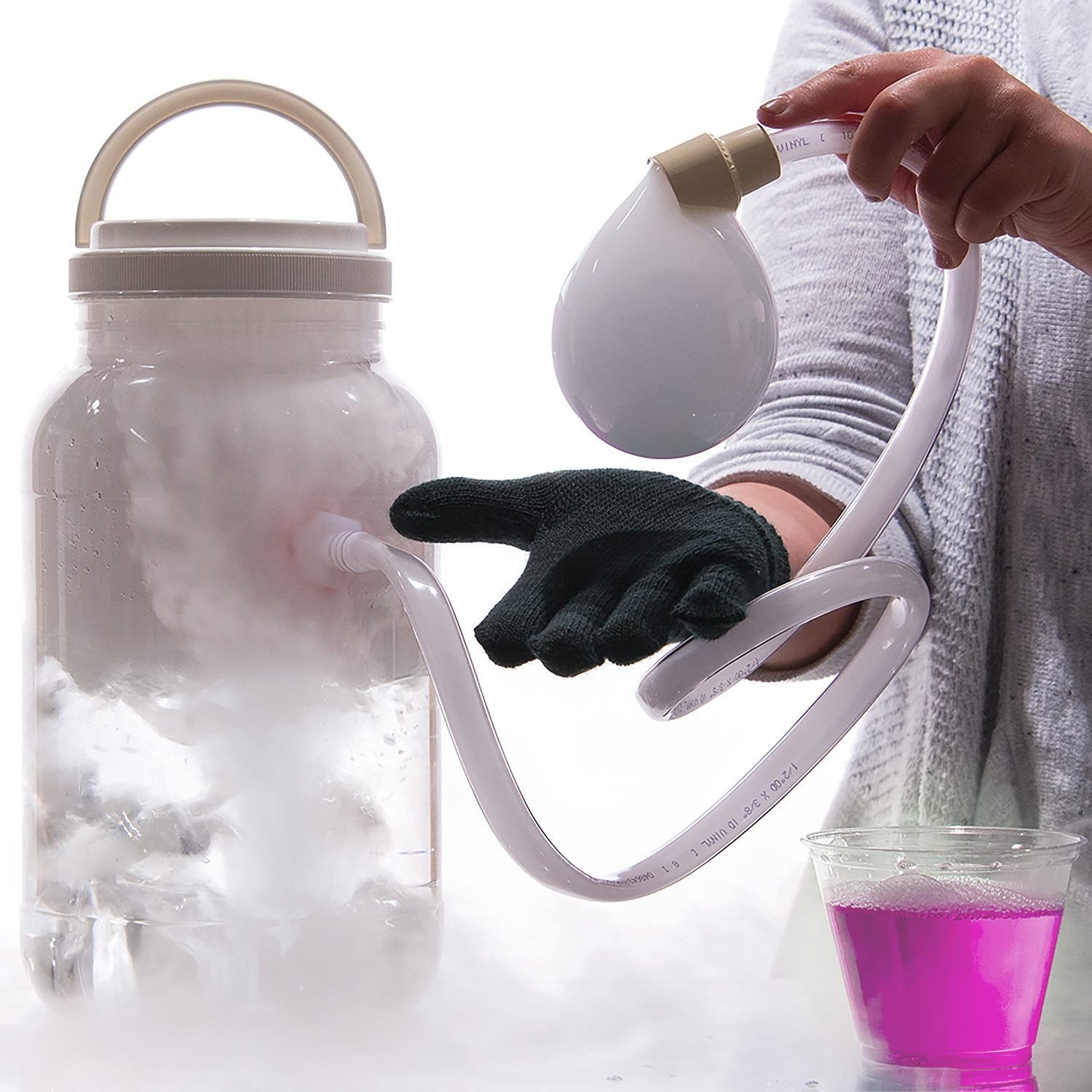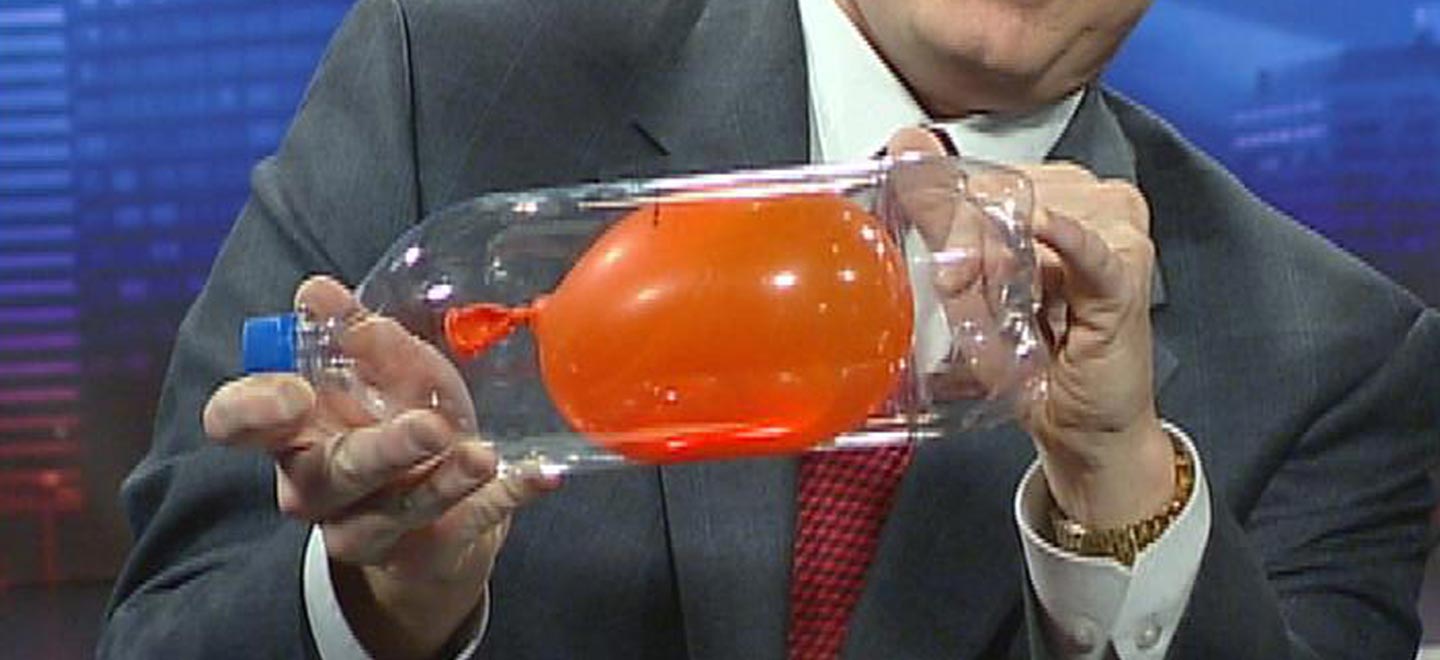
Balloon in a Bottle Experiment – Properties of Air
Balloon in a Bottle Science Experiment
Balloon in a Bottle
How hard do you think it would be to inflate a balloon inside a plastic soda bottle?
Some things look easy until you try them. You might not think it would be hard to inflate a balloon inside a plastic soda bottle — you just put the balloon inside the bottle and puff away, right? You’ll quickly realize, though, that the properties of air make blowing up the balloon a bit trickier than you thought.
Experiment Materials
- 1-liter bottle
- Latex balloons
- Rubber stopper or cork
- Water
- Nail
- Hammer
Experiment
1
Slip the balloon inside the neck of the open bottle and stretch the mouth of the balloon over the bottle top.
2
Take a deep breath and try to blow up the balloon by blowing into the neck of the bottle.
3
Remove the balloon, fill the soda bottle to the brim with water, then seal it with a cap.
4
Ask an adult to punch a small hole with a nail and hammer in the side of the bottle near the base.
5
Remove the nail, uncap the bottle and empty the water out the top.
6
Place the balloon back in the bottle, just like in Step 1, and try to blow up the balloon again. Blow hard until the balloon fills most of the bottle — leaving a little water in the bottle will help with this. Place a finger or thumb over the hole when you stop blowing. Then, move your finger and see what happens.
How Does It Work
How It Works
The first time you try to inflate the balloon, you won’t get very far. Because the bottle is already filled with air, there’s no room for the balloon to expand inside. However, when you punch a hole in the bottle, the air molecules have an exit, so the next time you try to inflate the balloon, the air is pushed out the hole as the balloon fills the space inside. As long as the hole is plugged, the balloon will stay inflated. When you remove your thumb, outside air quickly flows back into the bottle as the balloon collapses. Because of the elasticity of latex, the balloon shrinks to its original size as air rushes back out.
Why fill the bottle with water before punching a hole in it? When you fill the bottle with water, you make its plastic walls more rigid, so it’s easier to push the nail through. Who’d ever expect fluid water to provide that much support?
Take It Further
To take the experiment one step further, inflate the balloon in the bottle again and cover the hole with your thumb so the balloon stays inflated. Pour water into the balloon while keeping your thumb over the hole. Once you remove your thumb from the hole, a stream of water will gush out of the balloon. Make sure you’re outside or near the sink before conducting this step.
If your thumb gets tired from conducting all of these experiments, you can perform one more test. Screw the cap tightly on the bottle and remove your thumb. You’ll see that the balloon stays inflated with the cap on the bottle, even though your finger is no longer covering the hole. For the air to flow, both holes have to be open. How would more holes or one very large hole change the speed of inflation and deflation? Would using a larger or smaller bottle make the balloon inflate and deflate faster, slower or at the same speed? Try it out and see for yourself. There are endless experiments you can conduct with some balloons and bottles on hand.



